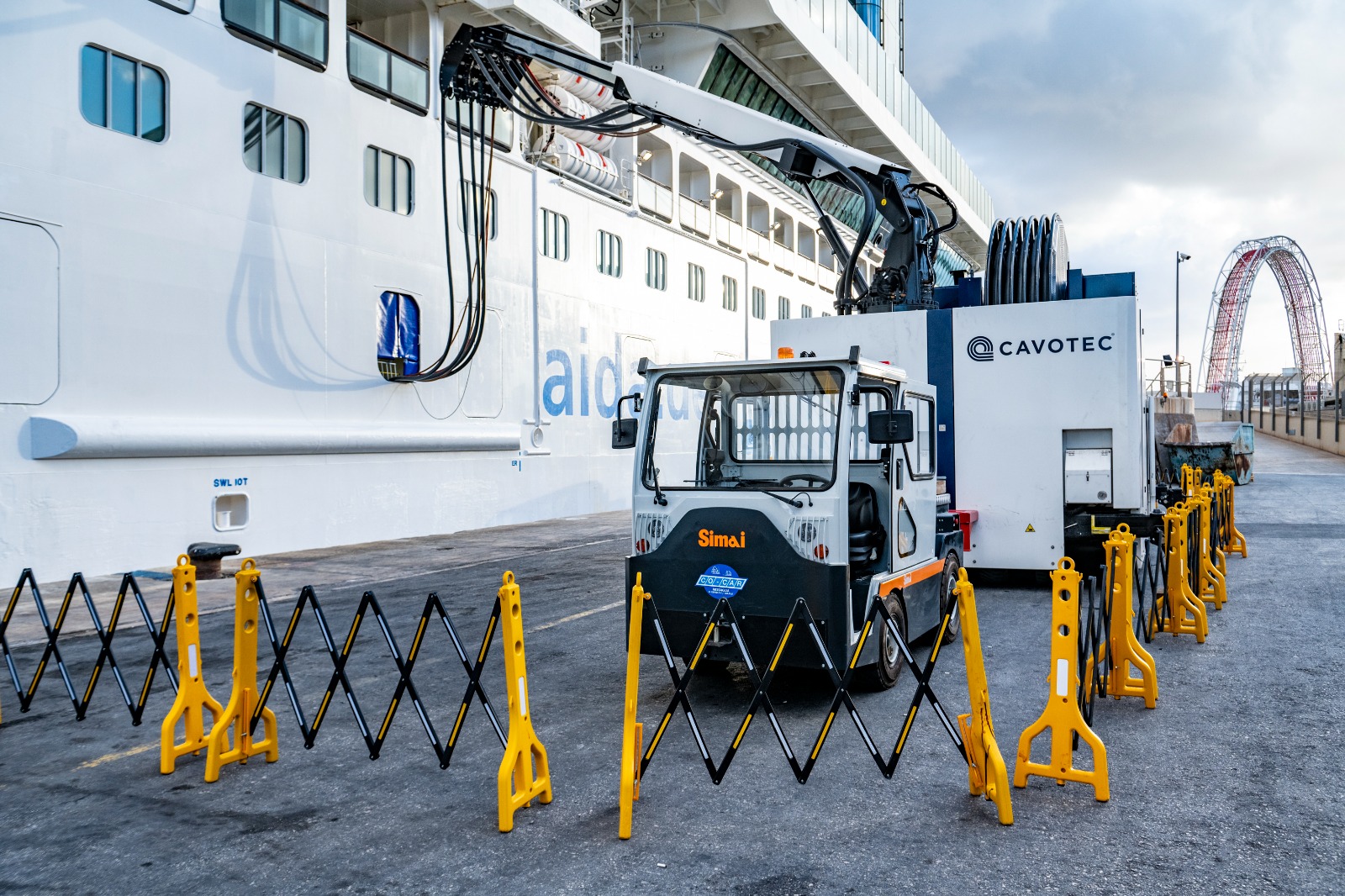
The Shore-to-Ship project advances to trial phase on cruise liners
The Shore-to-Ship project is currently in a pivotal testing stage, characterised by trials conducted on cruise liners. This notable advancement seeks to enable the cessation of ship engines upon arrival at the Grand Harbour, leading to a smooth transition to electric power.
This was announced by the Minister for Transport, Infrastructure and Capital Projects Aaron Farrugia, and the Parliamentary Secretary for European Funds, Chris Bonett, during a visit to the shore-to-ship project at the Grand Harbour.
This phase follows the continuous progress of the infrastructural project throughout the year, positioning the Grand Harbour at the forefront of European innovation by introducing a shore-based electricity system for passenger ships, port wide. Infrastructure Malta has successfully implemented this system at all five primary passenger cruise quays: three at Xatt ta’ Pinto in Floriana, one at l-Għassar tal-Għeneb (Deep Water Quay) at Marsa, and the other one at Boiler Wharf, Senglea.
Upon completion, this initiative will enable ships to disengage their gas or heavy fuel oil engines, connecting instead to the onshore electricity supply. This connection serves to operate the necessary machinery for the provision of services while the cruise linersare stationed in the port.
This environmental investment will be cutting 90% of air pollution by cruise liners at the Grand Harbour. Through this investment, Infrastructure Malta will provide cleaner air for the 17,000 families residing around the Grand Harbour area.
A 2015 European study estimates that each passenger ship spending eight hours docked in the port emits 1.2 tonnes of nitrogen oxide. To put this into perspective, it is equivalent to the emissions from 300,000 cars driving from Ċirkewwa to Marsaxlokk simultaneously. Additionally, these ships release 30 kilograms of particulate matter emissions (fine dust in the air), mirroring the emissions from 180,000 vehicles traveling the entire length of Malta from top to bottom.
Infrastructure Malta CEO Ivan Falzon was present for this visit. The project is co-financed by the EU's Connecting Europe Facility.

